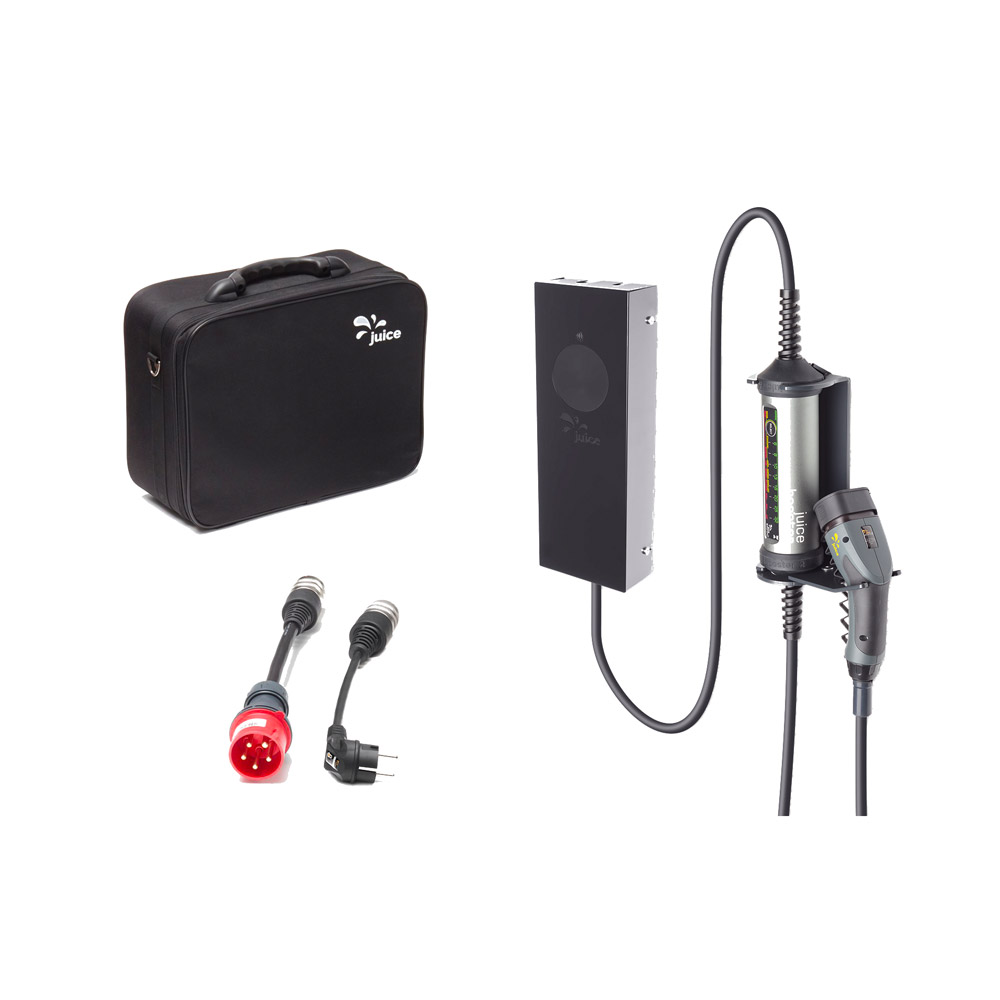

This means that two Wallbox chargers can be wired to the same circuit breaker and they will communicated with eachother and balance the power usage so they don’t overload it. The Wallbox can do power sharing on the same circuit while the ChargePoint cannot. One big difference is that the ChargePoint comes with a NEMA connector for 6-50 or 14-50 outlets while the 48-Amp Wallbox can only be hardwired (The 40-Amp version does come with a NEMA connector so you can plug it in)Īnother difference is in features related to energy usage.
Juice ev charger Bluetooth#
The Wallbox has the additional Bluetooth connectivity, something which you won’t really find on other EV chargers.
Juice ev charger plus#
Wallbox Pulsar Plus – Level 2 EV Charging Station (48 Amp, 11 kW)ĬhargePoint Home Flex vs Wallbox Pulsar Plusīoth chargers deliver essentially the same amount of power, 11.5 kW for the 48-Amp Wallbox and 12 kW for the 50-Amp ChargePoint and even though the numbers are slightly different, in reality it won’t make any difference. Their included one is not the best but that could change in the future. The Grizzl-E charger is OCPP-compliant so it is basically open to any app that uses that protocol allowing you the freedom to use it with any app that you want. The ChargePoint comes with its own app, the same that you’d use for the public charging network, it is polished and works very well. Here the big difference between them is in the approach. The Grizzl-E Classic version has no smart features but the Smart version does. Both these devices are energy star certified. Neither can do power sharing, in the case of the Grizzl-E they also sell a Duo version with 2 charging cables attached to it. The Grizzl-E is much tougher with an IP67 rating while the ChargePoint only has a NEMA 3R rating (rough equivalent of IP14). The Grizzl-E comes in a Classic or Smart version. The main differences are in the Amp rating because the ChargePoint is a 50-Amp charger while the Grizzl-E is a 40-Amp charger. You can plug both chargers to a 50-Amp standard NEMA outlet or hardwire them. The ChargePoint does have a backlight on its holster with the Juice Box doesn’t. In terms of design, both chargers have their connector holster integrated into them and a minimalistic approach to things, no LCD screens or buttons. The JuiceBox does have the CO2 metrics in their app that the ChargePoint doesn’t while the ChargePoint can answer more complex questions through Alexa and Google Assistant like “how much have I spent on charging my EV this month?”. The JuiceBox also has a slightly longer charging cable that measures 25 feet.īoth chargers come with a J1772 charging cable, both have a Wifi connection and smartphone app and can be scheduled to charge only at certain times of the day, controlled by voice or present detailed reports of each charging session. The Enel X has a NEMA 4X rating (IP66 equivalent) which really surpasses the ChargePoint’s NEMA 3R rating. This translates to a difference in power of course, the ChargePoint has a power output of 12 kW compared to the 10 kW on the Enel X JuiceBox. The main difference between the ChargePoint HomeFlex vs the JuiceBox is that the JuiceBox can only go up to 40 Amps while the ChargePoint can output 50 amps. This EV charging station comes with a 3-Year warranty and 24/7 Customer support.ĮNEL X JuiceBox 40 – Level 2 EV Charging Station (40 Amp) The JuiceBox and Wallbox are tougher chargers. The ChargePoint Flex is NEMA 3R rated so we’d recommend that you keep it away from water as much as possible. The app can show you a complete report on every charging session in terms of how much energy you’ve used, how much it cost and how long it took. You can even go so far as asking it how much you’ve been paying to charge your electric car this month. The app can start it or stop it and it allows you to do that also via your voice because of Amazon Alexa and Google Assistant integration. You can connect to it through ChargePoint’s app, the same one which you would normally use to find public charging points. You can plug it into a NEMA 14-50 or NEMA 6-50 wall outlet. It uses an SAE J1772 connector so it is able to charge any kind of EV in North America including Tesla models which although they use a custom charge port, there’s an adapter that comes included when you buy one. This is a 50-Amp charger that can deliver up to 12 kW of power through its 23ft (7m) charging cable. ChargePoint Home Flex – Level 2 EV Charging Station (16-50 Amp)Īnd we’ll start with the one every charging company wants to beat, the ChargePoint Home Flex.


 0 kommentar(er)
0 kommentar(er)
